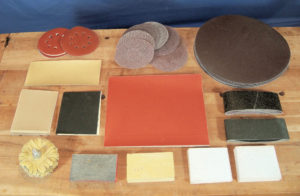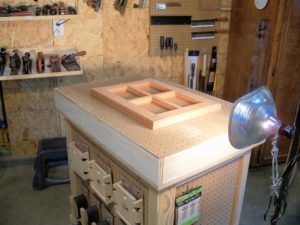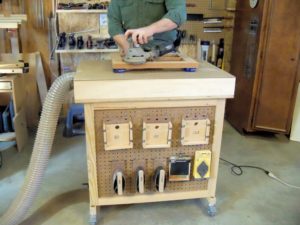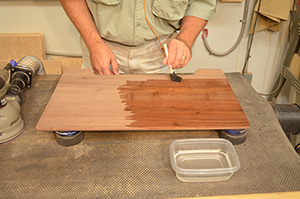The Sanding Procedure
Posted by Ralph on 11 07 2025
✨ What’s New in Our Sanding Guide
- Updated grit progression: New recommendations for sanding sequences based on wood type and finish goal.
- Surface inspection tip: Use low-angle lighting to detect imperfections before applying paint or stain.
- Raised grain method: Wet the surface to lift fibers for a smoother, professional-grade finish.
- Dust control improvements: Learn how a downdraft sanding station extends abrasive life and improves finish quality.
- More resources: Explore our related guides on wet sanding and downdraft sanding station.
We are often asked about “the sanding procedure”, or which abrasive grits are the best to use. The true answer is “it depends”... on things like the materials you choose for your project and the desired end result of your finish – are you trying to obtain a glossy, polished finish or a rustic result?
For example, if you’re painting and want to see the wood grain in the paint, then you can finish pretty quickly, sanding to 120 and done. But if the paint finish should look smooth and glossy, you’ll need to sand down to at least 220 - perhaps 400 - to get the polished finish you want. Another consideration is that a painted finish on wood requires less sanding than a stained wood surface because the stain settles into every crevice, making any scratches very prominent and paint tends to sit proud of the scratches, providing a smoother finish.

Ultimately, there is no "one size fits all" set of instructions for which abrasive grit to start with, how far to "step down" between grits, how many times you should step down between beginning and finishing, and which grit is best to finish sanding. In the wood shop, we generally like to start with 80 grit, then step down to 120, ending with 220, or perhaps moving from 220 to 320 to obtain the finish we want. Again, there are things to keep in mind here too. For example, when sanding soft wood, you may start with 120 grit and finish with 400; when sanding hard wood, you might want to add 100 grit between the 80 and 120 grits, then finish with 220 grit sandpaper. If you’re finishing fine furniture, you'll need to sand in 6-8 steps, graduating grits at each step, ending with a fairly fine grit like 600. A greater number of steps with smaller "jumps" between grits will help you to develop a feel for what works while obtaining a finish worthy of your project.
In addition to getting a feel for moving through your grits to the desired level of sanding, we also have a few tips that will help you to refine your sanding process:

Before applying your finish, use a low angle light on your project to identify defects. The sanding process leaves scratches in the surface, even when using a superfine abrasive like 4000 grit. Small, uniform scratches tend to blend together and are hard to detect or invisible to the naked eye. What you want to avoid is a random scratch that is larger than the overall field of scratches. Shining a strong light across the surface at a very low angle highlights any issues like this because it elongates the shadows of any larger scratches or other defects, allowing you to identify and fix them before applying your finish.
Another technique is to wet your surface before sanding. Because finishes wet the wood, they cause any loose ends in the wood grain to curl up and appear in the finish. Wiping the surface with a water-damp cloth or sponge before sanding raises the loose fibers, helping you to sand them now and reduce the need to sand as much between finishing steps. We recommend that you sand with your first two grits, wet the wood with a damp cloth or sponge, let the surface dry, and then finish your sanding steps. You can also check out our blog about wet sanding.

Proper dust collection is more important to your final product than you think! As you sand, wood particles are cut from high spots on your piece – and small pieces of the abrasive come loose from the paper as well. High quality sandpaper reduces how often this happens, but it does happen. When you change grits, you may now have 100 grit particles under your 150 grit paper as you sand. Using a good dust collection system, like our downdraft sanding station, during sanding, as well as wiping off the surface of your parts between grits, will significantly reduce the appearance of larger scratches and will help increase the life of your sandpaper.
If you have comments, suggestions or questions, we invite you to contact us. Call us at (800) 516-7621, email Service@2Sand.com, or reach out to us on our Facebook Page, on Instagram, or on Twitter.
Happy Sanding!

